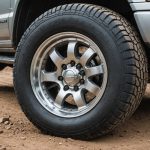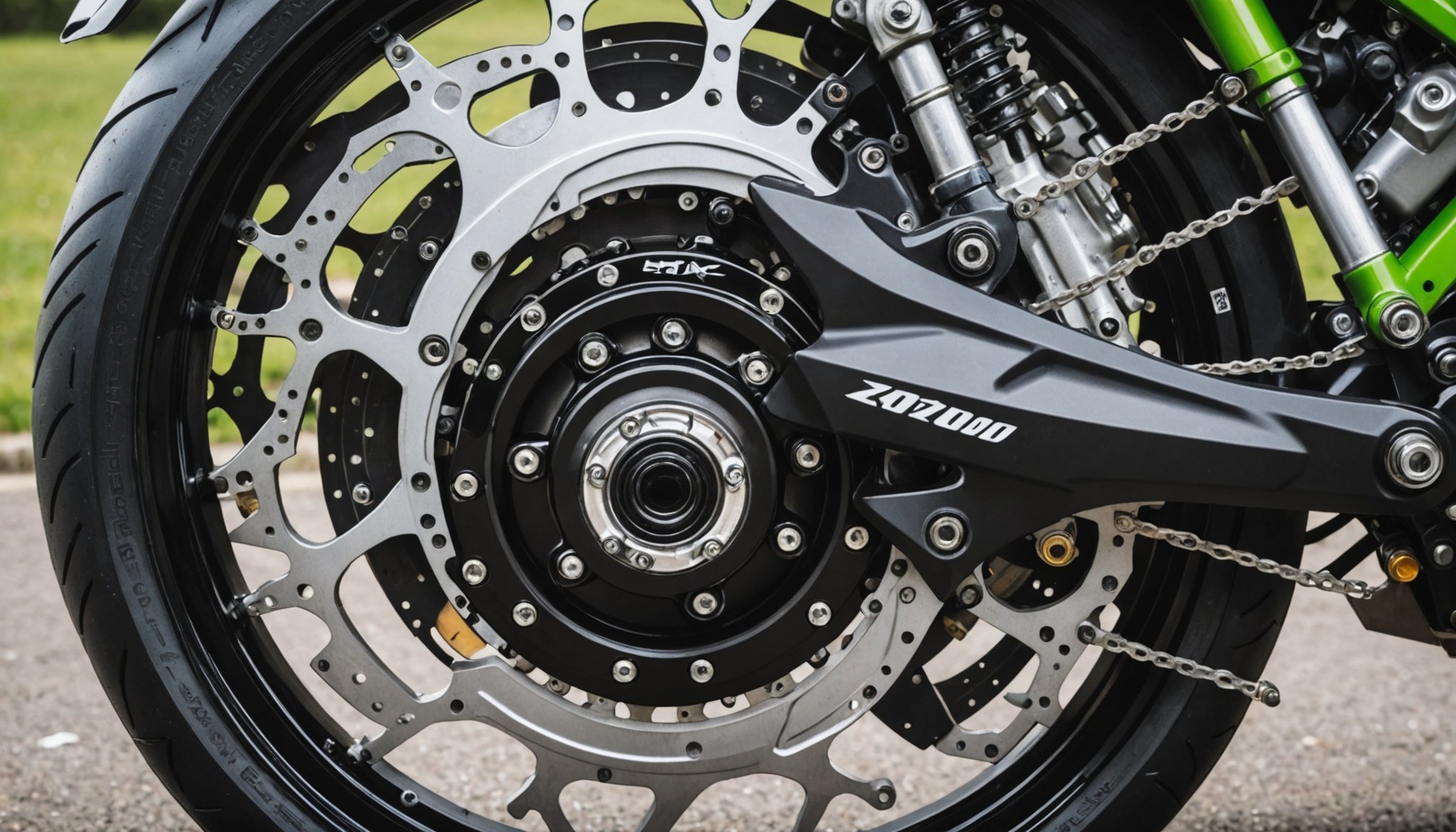Overview of Front Brake Discs Upgrade
When it comes to enhancing the braking performance of your Kawasaki Z1000, upgrading the front brake discs is crucial. The importance of upgrading cannot be overstated, as it directly influences the motorcycle’s stopping power and overall safety.
Stock vs. Aftermarket Options
Stock brake discs, although sufficient for general use, might not provide the desired braking performance for all riders. Aftermarket options offer a significant improvement. They are designed to dissipate heat more efficiently, reduce weight, and enhance the bite of the brakes compared to stock alternatives. This can translate into a more responsive and reliable braking performance, essential for navigating challenging terrains or spirited rides.
Have you seen this : Boost Your Ducati Diavel”s Starting Performance: A Step-by-Step Guide to Installing a New Battery
Benefits of Maintaining High-Quality Brake Components
Ensuring that your Kawasaki Z1000 is equipped with top-tier front brake discs provides several advantages. High-quality components tend to have better durability and resistance to wear, meaning longer intervals between replacements. Additionally, superior brake discs can offer enhanced modulation, allowing for smoother and more controlled braking actions. This upgrade not only boosts safety but also contributes to a more enjoyable riding experience. Investing in quality front brake discs is an investment in your motorcycle’s performance and your peace of mind.
Tools and Materials Required
To successfully achieve motorcycle brake replacement, it’s crucial to have the right tools and materials readily available. Undertaking this task without proper equipment can result in incomplete or faulty maintenance.
Topic to read : Essential Tips for the Safe Installation of LED Turn Signals on Your Moto Guzzi Stelvio
Essential Tools Needed for Replacement
- Torque Wrench: Ensures accurate tightening of bolts to prevent damage.
- Allen Wrench Sets: Required for removing calipers and making adjustments.
- Pliers: Versatile for pinning and other tasks in brake systems.
- Dedicated Brake Tool Kit: Often includes specialised tools like brake spring pliers.
Recommended Brake Disc Brands and Specifications
While many brands offer reliable performance, it’s advisable to consult your motorcycle’s manufacturer guidelines when selecting brake discs. Leading brands noted for consistent quality include EBC, Brembo, and Galfer. Ensure discs meet specific compatibility standards and thickness requirements for optimal safety and functionality.
Additional Materials
- Brake Fluid: Necessary for hydraulic brake systems. Ensure the correct type (e.g., DOT 3, DOT 4) for your motorcycle.
- Cleaning Supplies: Degreasers and brake cleaners maintain a clean workspace and polished parts.
- Protective Items: Gloves and goggles for personal safety during the maintenance process.
Arming yourself with these tools and materials sets the stage for a successful and efficient motorcycle maintenance operation, ensuring both safety and performance enhancements.
Safety Precautions
Understanding motorcycle safety is crucial before embarking on brake maintenance. Ensuring you have the necessary safety equipment can significantly reduce the risk of injury. Essential gear includes gloves, which protect your hands from abrasions and chemicals, and goggles to safeguard your eyes from debris.
Before you start any maintenance, perform a comprehensive check on your motorcycle. Inspect the brake system for wear and tear. Check fluid levels, and ensure all bolts and fastenings are secure. This preemptive action minimizes surprises that could pose operational risks during brake replacement.
Environmental considerations are also vital. Ensure you are working in a well-ventilated area to avoid inhaling harmful fumes. Properly dispose of any hazardous waste, including brake fluids and old components, in accordance with local regulations. This protects both your health and the environment.
It’s also advisable to have a clear workspace, free of clutter, ensuring all necessary tools are readily accessible. This will help avoid unnecessary accidents. Keeping these safety tips in mind not only ensures the efficiency of the maintenance process but also boosts confidence while handling potential obstacles. Prioritizing safety enhances both your motorcycle’s performance and your riding experience, providing peace of mind on your next adventure.
Step-by-Step Instruction for Replacing Brake Discs
Replacing brake discs on your Kawasaki Z1000 can improve your motorcycle’s performance and ensure safer rides. This guide provides comprehensive installation instructions for a successful brake disc replacement.
Preparing Your Motorcycle
Before beginning brake disc replacement, ensure the motorcycle is stable and secure. Operate only on level ground to prevent accidents. Use a motorcycle stand to support the bike; this will aid stability during work. Safety is paramount, so create a checklist: verify that the brakes are cool, gather tools, and wear gloves. Remember, preparation is critical to a smooth installation process.
Removing the Old Brake Discs
To remove old brake discs, first loosen the brake components. Begin by carefully detaching the calipers, ensuring the brake lines are not stretched or damaged. When handling old parts, take intricate care to maintain their condition should you need reference while securing the new parts. While disassembled, inspect the calipers and associated components like pads for uneven wear or damage, potentially necessitating additional repairs.
Installing the New Brake Discs
Fit the new brake discs following the given sequence. Start by aligning them with the wheel hub, taking special care with the torque specifications provided by Kawasaki. This ensures the discs are securely attached. Use recommended lubricants or coatings on contact surfaces to enhance performance and minimise wear. Properly tighten screws using a cross-pattern to secure the installation effectively. This step-by-step process ensures optimal braking function and reliability.
Compatibility and Recommendations for Brake Discs
Finding compatible brake discs for your Kawasaki Z1000 involves understanding specific needs regarding aftermarket brake discs and considering several key factors. It’s essential to ensure that the discs fit properly not just physically, but also in terms of performance expectations. Aftermarket solutions can offer enhancements in wear resistance and stopping power without sacrificing compatibility.
Performance parts are often favoured by enthusiasts looking to upgrade their motorcycles for optimal stopping strength and durability. Selecting the right brake discs requires attention to material and design, such as ventilated or slotted designs which dissipate heat more effectively. This can be crucial in maintaining reliability under intense riding conditions.
Recommendations often highlight discs that balance cost with performance enhancements. Brands popular among Kawasaki Z1000 users consistently receive praise for delivering improvements in braking efficiency. Reviewers frequently commend discs that reduce brake fade, a critical factor for high-performance motorcycles.
Always consult with a trusted retailer or mechanic experienced in Kawasaki models to ensure the chosen aftermarket brake discs enhance your riding experience without unforeseen compatibility issues. Customer testimonials further underscore the importance of user experiences, making them invaluable for benchmarking potential brake solutions.
Maintenance Tips Post-Installation
Once new brakes have been successfully installed, maintaining their optimal performance becomes essential. Regular checks and maintenance are crucial for extending the life of your brake components and ensuring your motorcycle remains safe to ride.
Best Practices for Brake Maintenance
To keep your brakes in prime condition, adhere to a routine that includes checking the brake fluid levels and inspecting the brake pads for wear. Over time, pads can thin out, which affects stopping power. Spotting these changes early can prevent damage and costly replacements. Motorcycle care isn’t just about aesthetic upkeep; it’s about attention to critical components.
Signs of Wear and Taking Action
Being proactive in noticing signs of wear is vital to performance optimization. Look for uneven wear on the brake pads, unusual noises, or a decrease in braking efficiency. Should these occur, immediate action should be taken. Even minor issues, if left unattended, can compromise safety.
It’s not just about motorcycle care—taking care of your brakes involves ensuring stability and security during every ride. Stay informed and attentive to help maintain optimum performance and prolong the life of your brake system.










